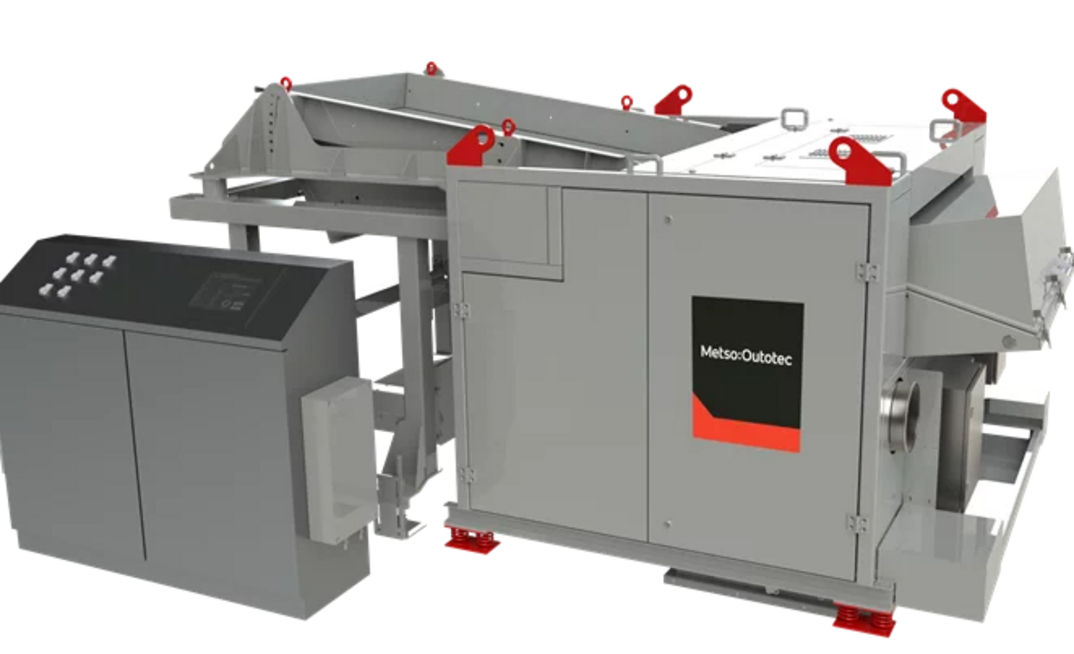Sensor-based ore particle sorting is increasingly being adopted by miners looking for a more powerful method for pre-concentration or waste rejection that can be applied early in the comminution process.
Several ore-sorting technologies are being used for various materials, but one which shows great promise is a method that analyzes each and every rock particle for unique physical and chemical properties and separates the particles by high-speed air valves.
Material is presented to the sensors as a monolayer of liberated particles. Different sensor types analyze every single particle, and the decision of accepting or rejecting is made within 30 milliseconds.
This maximizes recovery or upgrade and is suitable for various minerals and applications. Successful implementation relies on ore heterogeneity, differential sensor response and suitable feed preparation.
The process is becoming even more powerful as sensor technologies mature and data is used to optimize the process further.
Mining Magazine sat down with Metso Outotec's Rashmi Kasat, VP Digital Technologies, Jorn Rohleder, Manager, Ore sorting technologies and Suzanne Lynch-Watson, Director, Optimization & Laboratory Services, to learn more. (Their answers have been edited into this interview)
How can ore-sorting be used to boost productivity in assets?
The concept of removing barren or unwanted particles from material streams has been applied since the early days in minerals processing and metal production.
Recent developments in sensor technologies and computing power enable more efficient identification of different characteristics within particles or material streams at capacity sufficient to many mining and mineral processing applications. All geological materials are heterogeneous, and sorting is based on the identification of the variability within the material stream.
Various sensor types can detect different characteristics. Sorting is applicable at bulk (e.g., shovel, section over conveyer belt) or at particle scale (1-15cm). Commonly used sensor types for particle sorting include radiometric, X-ray transmission, X-ray fluorescence, colour, nearinfrared spectrometry, and electromagnetic. Identification of suitable sensor(s) and sorting parameters requires studies case by case.
Ore sorting presents several potential ways to improve the efficiency of operations. These include increasing the mill feed grade by removing barren or low-grade particles, removing particles containing deleterious elements, decreasing haulage costs, reducing the mass of fine tailings, and reducing the amount of energy/water consumption per ton of produced metal in concentrate.
What are some of the challenges mining needs to address to improve ore-sorting adoption?
Even though sorting has been used in mining and metallurgy for around 500 years, the idea of automating this process with high-speed air valves in large capacity applications is still novel to the conservative mining industry. It is well established for industrial minerals; however hard rock applications still lack the critical mass for market penetration.
The required next step will be to understand the implications of a sorting processing step on the whole processing chain, starting with the resource model. Both bulk and particle sorting technologies work and have proven that numerous times in test work, pilot campaigns as well as on-site where it has been implemented. It requires a joint understanding between mineral processors, mining engineers and geologists to apply the technology in way that has a net-positive impact on the whole project.
Have there been key technological advances that can improve ore-sorting adoption?
Ore sorting is the next step in the mining industry to be more sustainable. The technology associated with material handling and setting the process to work smoothly with the sorter is one of the key advances under one supplier to follow and calibrate the complete flow sheet.
Other great topics are the increase of sorter suppliers and companies looking to improve the flowsheets and develop simple solutions for sorting with higher capacity and making this option more profitable in the industry.
























